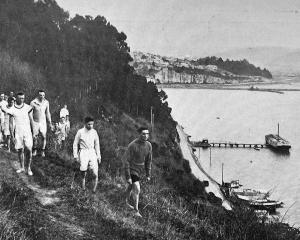Interviewed by your representative in Bedford Place this week, Mr Carroll told me that he left New Zealand at the end of the Boer War and visited Australia and South Africa in connection with gold-dredging. From the Cape he pushed up to Madagascar, and finding it a rich country, he settled there. He reached London a few days ago on a business visit, and is hopeful that he may find it possible to return to Otago for a short holiday before going back to Madagascar, but this depends entirely on circumstances. He says the country is exceedingly rich in minerals and petroleum, and the French Government gives a ready welcome to any foreigner with a bona fide business proposition for the development of the island.
Unfortunately there are, however, a large number of French companies whose officials are not disposed to look so favourably on foreigners. The island is 1000 miles long and 400 broad.
The climate in the interior is healthy, while on the coast it cannot be considered bad - certainly not so depressing as that of some other tropical countries. This is largely due to the two breezes which blow from the east and west. The east coast is well wooded, and the natives make some fine furniture from this wood. On the west coast there are continuous patches of woodland, but these contain a good deal of ebony.
There are three million natives, of Malayan appearance. They have a special dress and mode of life not found in any other part of the world. They are good workers and docile.
• The downpour on Sunday was not limited to the bursting of a storm cloud over Mount Cargill or Pine Hill, but extended over a much wider area. From Signal Hill to the Gardens road, Opoho, the rain was phenomenal, and it was the tremendous rush of water down the channels (in come cases covering the roadway) in all the hill roads on the east side leading to the Valley, which, leaping over the main road channels and paths, caused, as much as anything else, the flooding of the main thoroughfare and of Kelvin Road and Glenroy. Lamentable evidences of this can be seen at the top of King Edward Street (Glenavon), where Messrs Bolton and Timms have channels cut through their respective properties some 10ft wide and 10ft or 12ft deep, and in the properties lower down, which have been considerably raised by the soil deposited. In this street the damage has probably been more serious from a financial point of view than anywhere else.
Further up the Valley, and on the same side, in Montague Street, Mr Lucy's property is damaged to the extent to many pounds, a large culvert having been destroyed through the pressure of water, and the garden and path carried away. - ODT, 28.12.1911.












